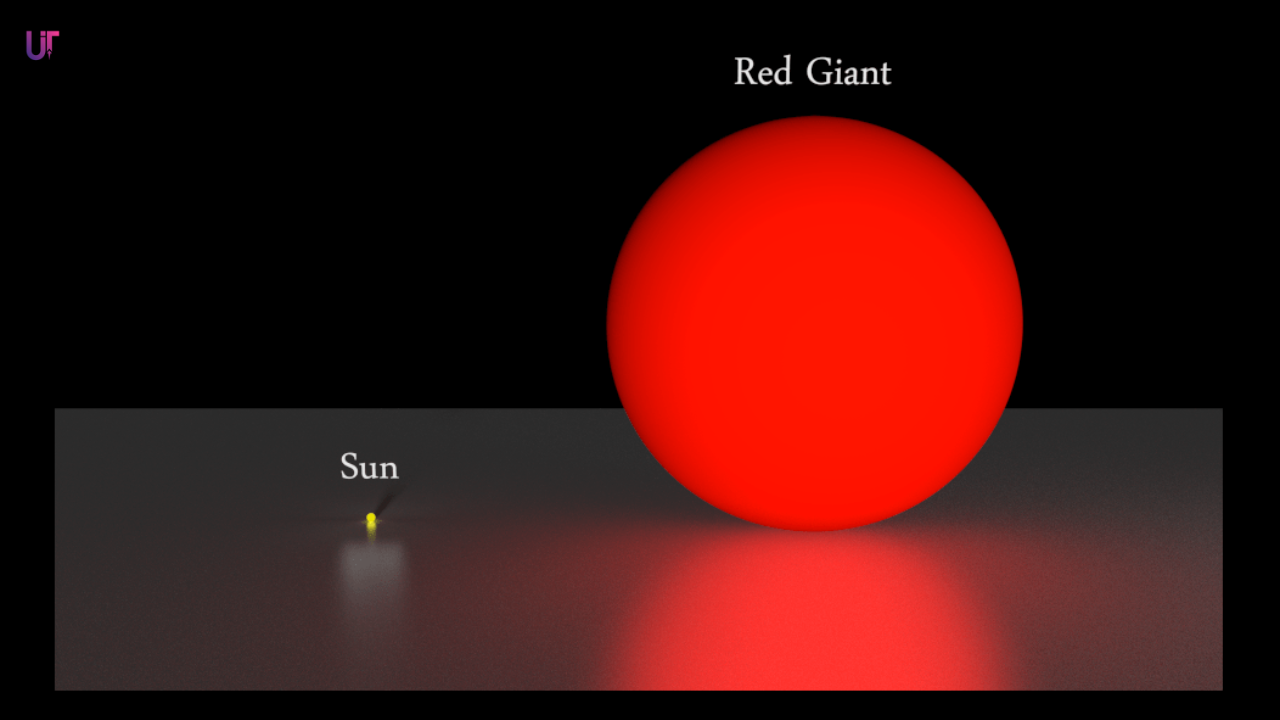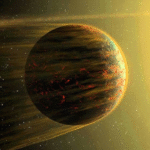A Utopedia Entry
When a star grows old, it doesn’t fade quietly — it swells into something vast, bright, and beautiful. This majestic transformation marks the birth of a red giant, a phase that reveals both the fragility and grandeur of stellar life.
Imagine our Sun suddenly expanding until it swallows Mercury and Venus. The skies of nearby worlds would glow blood-red. That’s the life of a star entering its final chapters — not a collapse, but a breathtaking transformation.
What Is a Red Giant?
A red giant is a large, luminous star in the late stage of its life. It forms when a star that was once like our Sun runs out of the hydrogen fuel at its core — the same fuel that kept it burning steadily for billions of years.
When that hydrogen runs out, the balance that held the star together collapses. Gravity squeezes the core, heating it up, while the outer layers expand dramatically. The star becomes cooler on the surface, giving it a reddish-orange glow — hence the name red giant.
In essence, it’s a star’s retirement phase — still burning, but slower and more dramatic.
How Red Giants Form
In the main sequence stage (the long middle of a star’s life), a star fuses hydrogen into helium in its core. This fusion produces energy, which pushes outward against gravity’s pull.
But once the hydrogen in the core runs out, fusion slows. Without that outward pressure, gravity begins to crush the core inward, making it incredibly hot and dense. Meanwhile, the surrounding shell — which still contains hydrogen — ignites in a new round of fusion.
This shell-burning causes the star’s outer layers to inflate, sometimes expanding to hundreds of times its original size. The surface cools slightly, turning reddish, while the overall brightness increases dramatically.
It’s like a candle’s flame spreading wide and slow — cooler in color but brighter overall.
The Structure of a Red Giant
Inside a red giant, the layers tell a story of cosmic recycling:
- Core: Mostly helium ash left from the earlier fusion process, hot and dense.
- Hydrogen shell: The active fusion zone surrounding the core.
- Outer envelope: Huge, bloated, and thin — where the temperature is cooler and the light redder.
Some red giants eventually get hot enough to start fusing helium into carbon and oxygen. This stage, known as the helium flash, releases enormous energy for a brief time before settling into a new balance.
Our Sun’s Future as a Red Giant
One day — about 5 billion years from now — our Sun will become a red giant.
It will grow so large that it may engulf Mercury and Venus, and possibly even Earth.
If you could stand on the surface (you couldn’t, but imagine), the sky would be a fiery red sea. The Sun’s surface would stretch across half the horizon, glowing dimmer but far larger than today.
Eventually, the Sun will shed its outer layers into space, forming a shimmering planetary nebula, while the core collapses into a white dwarf — a dense stellar ember about the size of Earth.
Different Types of Red Giants
Not all red giants are identical — they come in a few flavors:
- Red Giant Branch (RGB) Stars: Ordinary stars in the first phase of expansion, powered by hydrogen shell burning.
- Asymptotic Giant Branch (AGB) Stars: Older, more evolved giants where both hydrogen and helium shell burning occur. These stars shed huge amounts of gas and dust into space.
- Supergiants: Even more massive stars that follow a similar path but end dramatically as supernovae.
Each of these types enriches the universe by releasing heavier elements into space — the carbon in our bodies, the oxygen we breathe, the iron in our blood all once came from stars like these.
Why Red Giants Matter
Red giants are not just dying stars; they are creators. Their powerful winds scatter the elements forged in their cores into space. Those elements later form new stars, planets, and even life.
In a very real sense, every breath you take once belonged to a red giant that lived and died billions of years ago.
They also help astronomers measure distances across the cosmos. Because red giants shine with predictable brightness, they serve as cosmic yardsticks, helping us map the scale of galaxies.
What Happens After the Red Giant Phase?
After a few million years, a red giant loses its outer layers, leaving behind its core.
- If the star is small or Sun-like, it becomes a white dwarf.
- If it’s massive enough, it might explode as a supernova, leaving behind a neutron star or black hole.
So, while a red giant represents the end of one star’s life, it also seeds the birth of countless others.
In Simple Terms…
A red giant is a star’s grand finale — a spectacular expansion before the quiet fade.
It’s the universe’s way of showing that even in endings, there can be beauty and rebirth.
As one cosmic flame cools and expands, it sets the stage for new worlds to form.
Key Takeaways
- Red giants form when stars run out of hydrogen fuel.
- They expand up to hundreds of times their original size.
- Surface becomes cooler (redder), but brightness increases.
- Our Sun will one day become a red giant.
- They enrich the universe with heavy elements.
- End states: white dwarf, neutron star, or black hole (depending on size).


